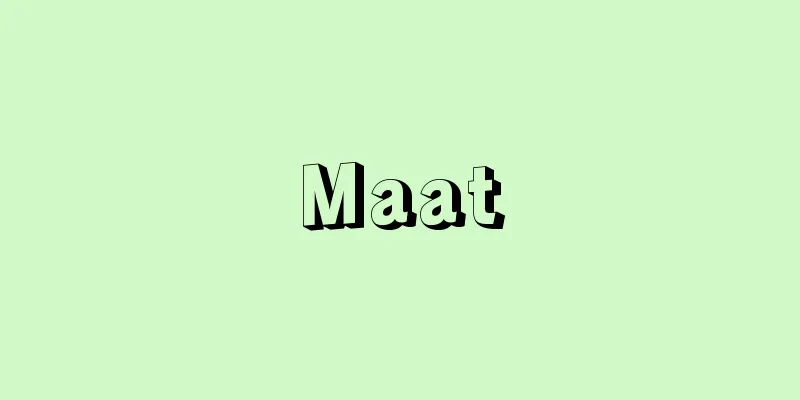Haldane, John Burdon Sanderson

|
Born: November 5, 1892, Oxford [Died] December 1, 1964. Bhubaneswar, India. British geneticist, physiologist, and science educator. His father, John Scott Haldane (1860-1936), was a renowned physiologist and professor at Oxford University. From the age of eight, he was introduced to physiological research by his father. He studied at Oxford University and served as a regimental officer during World War I. After being discharged, he became a fellow of New College, Oxford, and served as a lecturer at Cambridge University (1923-32). He worked in the laboratory of Frederick G. Hopkins and engaged in biochemistry research. He demonstrated that chemical reactions carried out by enzymes obey the laws of thermodynamics, and showed that identical enzymes are widely distributed in the animal and plant kingdoms. He also made numerous achievements in genetics. He established a mathematical theory of the mechanism by which evolution of species occurs through natural selection, paving the way for the use of population genetics to address evolutionary issues (1924). He was also active as a journalist and science educator, and left behind many publications. In particular, Daedalus (1924), which discussed the prospects for future scientific development and included the idea of in vitro fertilization, caused a great sensation and enhanced his reputation as a science journalist. He also formulated a theory on the origin of life separately from Alexander I. Oparin. The two theories share the general idea that life arose as a result of the increasing complexity of organic matter, but Haldane's theory is unique in that he believes that photochemical reactions caused by ultraviolet light were the driving force behind this process. He later became a professor at University College (1933). He became editor-in-chief of the British Communist Party's newspaper, the Daily Worker (1940), and joined the party (1942), but later became disillusioned with communism after seeing the suppression of the Soviet Union's genetics community due to the Lysenko theory. In 1957, in protest of the British and French invasion of Suez, he left Britain and emigrated to India. He served as a member of the National Statistical Institute in Calcutta (1957), director of the National Institute of Biological Sciences in India (1961), and the first director of the Orissa State Institute of Genetics and Biostatistics (1962), and laid the foundations for genetics research in India. Haldane |
|
[生]1892.11.5. オックスフォード [没]1964.12.1. インド,ブバネスワル イギリスの遺伝学者,生理学者,科学啓蒙家。父ジョン・スコット・ホールデーン (1860~1936) は高名な生理学者で,オックスフォード大学教授。8歳より父について生理学研究の手ほどきを受ける。オックスフォード大学に学び,第1次世界大戦には連隊将校として従軍。除隊後オックスフォード大学ニューカレッジのフェローとなり,ケンブリッジ大学講師を務めた (1923~32) 。フレデリック・G.ホプキンズの研究室に属し,生化学研究に従事。酵素の行なう化学反応が熱力学の法則に従うことを明らかにし,また同一の酵素が動植物界に広く分布することを示した。遺伝学においても数々の業績を上げた。自然選択によって種の進化が起こる機構に関して数学的理論を打ち立て,進化の問題を集団遺伝学の手法で取り扱う道を開いた (1924) 。他方,ジャーナリスト,科学啓蒙家としての活動も盛んで,多数の著作を残した。特に『ダエダルス-科学と未来』 Daedalus (1924) は,将来の科学の発展の見通しについて論じたもので,体外受精の構想も述べられていて,大きな反響を呼び,科学ジャーナリストとしての名声を高めた。また,アレクサンドル・I.オパーリンとは別個に生命の起原に関する理論を立てた。有機物質の複雑化が進行した末に生命が誕生したという大筋で両者の説は共通するが,紫外線による光化学反応がこの過程の推進力となったと考えた点にホールデーン説の特徴がある。その後,ユニバーシティ・カレッジ教授に就任 (1933) 。イギリス共産党機関紙『デーリー・ワーカー』主筆となり (1940) ,共産党に入党する (1942) が,のちルイセンコ説によるソビエト連邦遺伝学界の弾圧をみて共産主義に失望。 1957年,イギリスとフランスによるスエズ侵攻に抗議してイギリスを去り,インドに移住。カルカッタ国立統計学研究所所員 (1957) ,インド国立生物学研究所部長 (1961) ,オリッサ州立遺伝学・生物統計学研究所初代所長 (1962) を歴任し,インドにおける遺伝学研究の基礎をつくった。 ホールデーン
|
<<: Hortensius method - Lex Hortensia (Latin)
>>: Voltaire - Voltaire (English spelling)
Recommend
Special collection - tokubetsu choshu
A method of collecting local taxes. A local govern...
Anāhitā (English spelling)
The goddess of sacred water in ancient Persian myt...
《Euridice》(English spelling)
...From about 1590, he became a singer for the Me...
lip sync
...Time delay devices are used not only to create...
Lacquer - Kyushitsu
〘Noun〙 ("髹" means to apply lacquer ) The...
Kinichi Nakanoshima
Yamada-ryu Sokyo performer and composer. Grandson...
Cylinder press - Cylinder press
A printing press that prints by feeding paper onto...
Climate change - climatic variation
It is often used in the same sense as climate cha...
Willism - Ishishugi
The principle that when determining the validity o...
Fire Tornado
This refers to the whirlwind that occurs with a la...
Eka silicon - Eka silicon
...Five types of stable isotopes and eleven types...
Grape root aphid - Grape root aphid
It is an insect of the order Hemiptera, suborder ...
Great Buddha - Daibutsu
A giant Buddha statue. A general term for Buddha ...
《Court Report》
…the roots of this can be found in the widespread...
Township - Township
A rectangular land division system in the Midwest...









